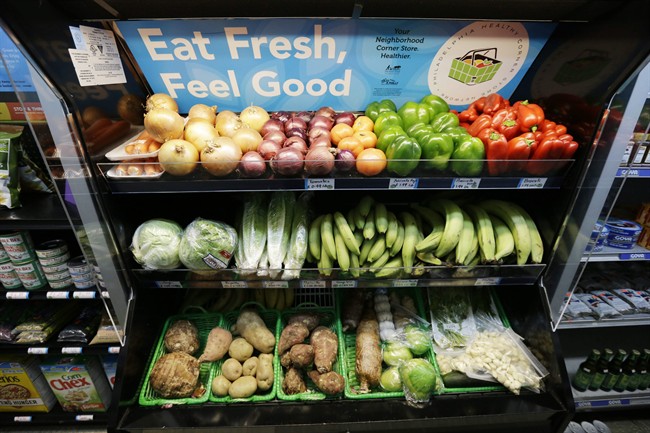TORONTO — It starts with stretching out the last of your paycheque on Kraft Dinner and ramen to feed your family. Then you skimp out on fresh fruits and vegetables and stock up on cheap, unhealthy fare instead. Finally, you’re skipping meals, shrinking your portions and choosing between your groceries or paying your bills.

A Canadian report is warning that for a staggering four million Canadians — including 1.5 million children — this food insecurity is a bleak reality.
What does this mean in the long run? Lead author Dr. Valerie Tarasuk explains the plight of so many Canadians: “Most people in Canada have no clue that this problem is so big and so serious and we need to raise awareness,” she said.
“You can’t be fixated on trying to get food on the table for your family – we erode people’s potential to be productive members of society and it’s socially isolating and marginalizing,” Tarasuk told Global News.
Tarasuk is a University of Toronto nutritional sciences professor and leader of PROOF, a research project focusing on policy options to address food insecurity. Tarasuk has been studying the issue for decades – “it just struck me as something that we needed to understand better.”
READ MORE: Eating healthy may cost $1.50 more per day or $550 a year
She and her team analyzed municipal data based on StatsCan annual community health surveys and found some disturbing trends across the country. Canadians’ concerns about food have persisted or grown in every province and territory since 2002.
In 2012, Ontario and Alberta appeared to be faring better with about 12 per cent of people facing worries about what to put on the dinner table, but that’s still more than one in 10 people, Tarasuk said.
Rates rise in the Maritimes, such as 17.5 per cent in Nova Scotia and 16.2 per cent in Prince Edward Island. The northern territories also faced hardship – in Nunavut, 45 per cent of Canadians encountered food scarcity and in the N.W.T. it was at one in five.
In 2012, Quebec, Saskatchewan, and British Columbia also faced the highest levels of food insecurity since the federal government started monitoring the problem.
“We’ve got a problem nationally,” Tarasuk warned.
READ MORE: How a Canadian yogurt is detoxifying the world’s food supply
The breakdown by city revealed that Halifax had the highest incidence of food insecurity, with one in five households affected, followed by Moncton, then Guelph and Barrie, Ont.
Certain groups — Aboriginal and black households, specifically — faced twice as much trouble with accessing and affording food, at 28 per cent each.
Keep in mind, the survey doesn’t include the homeless, people living on reserves, or those living in remote areas of Quebec, so Tarasuk says the numbers could be even higher.
Who is the average Canadian worried about where their family’s next meal will come from? Tarasuk said the profile varies: 70 per cent of households on social assistance are food insecure, 62 per cent of these people are working, though.
READ MORE: What one woman in Gabon taught doctors about global obesity
They could be single parents trying to make the most out of one income, or they could be struggling with seasonal, part-time, or temporary work and low wages, Tarasuk said.
Adults could be grappling with chronic illness – research has suggested that kids who grow up with food insecurity encounter health issues later on in life.
“It appears that at a severe level at least, food insecurity leaves an indelible mark on children’s health,” Tarasuk said. Ten years later, they could be dealing with asthma, depression or other conditions.
“This has a very toxic effect on people’s health,” she said.
Tarasuk said she hopes the report ushers in some discussion among politicians about how to reverse this growing trend.
“There’s for sure some poor bashing. We can certainly see people talk about people on welfare saying it’s their own fault, they’re lazy, they’re undeserving, but we don’t have any evidence of that,” she said.
READ MORE: 5 Canadian innovations that could change the face of global health care
An adult on welfare doubles his or her income when they’re 65 because they qualify for old age benefits. Seniors qualify for OAS (Old Age Security) and GIS (Guaranteed Income Supplement) funding. They also receive kickbacks for medicine and drug plans while the private sector offers seniors’ days and seniors discounts, Tarasuk noted.
“It’s that advocacy that’s given us social protection for seniors. Sadly, there’s nowhere near the same kind of energy when we talk about welfare reform,” Tarasuk said.
Read the PROOF full study here.
carmen.chai@globalnews.ca
Follow @Carmen_Chai




Comments